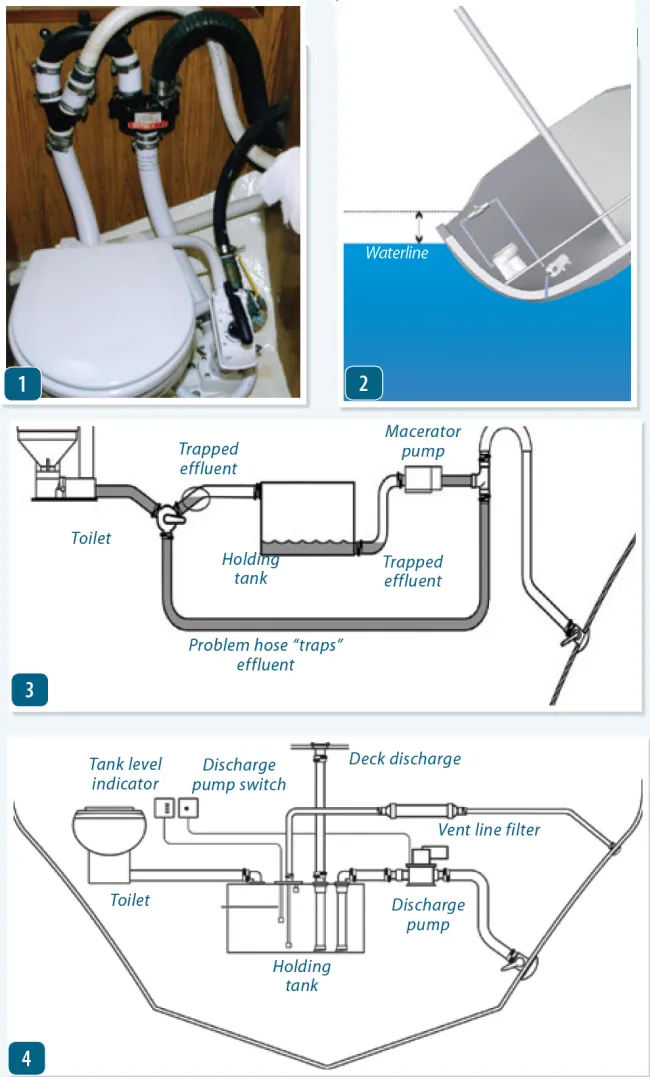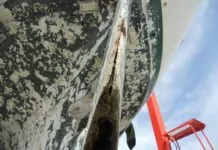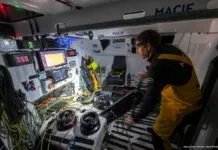
waste to the holding tank or overboard. While a well-designed system will provide
years of service, the DIY result is often a pretzel-like series of poorly-clamped hoses,
and multiple diverters such as this one, which also lacks a vented loop for the inlet.
2. Raw-water inlet and outlet lines need anti-siphon vents. The vent must loop
above the waterline at all angles of heel.
3. Early holding tank designs had leak-prone outlets at the bottom of the tank and often lacked a deck-level pumpout fitting. Similar systems, with the addition of a
deck pumpout, are common today. Ideally, a system should not trap waste in any of the lines. Trapped waste will exacerbate a odor problems.
4. At the other end of the design spectrum are systems tailored for areas where
pumpout facilities are readily available, like this one from Dometic. Instead of a
Y-valve, multiple check valves prevent back-siphon.
There are many ways to treat waste aboard a sailboat and still comply with local health and environmental regulations. Practical Sailor has tested all of them at one time or another. In addition to either raw-water or freshwater plumbed toilets, there are portable toilets, composting toilets like the Air Head, hold-and-treat systems like Raritan’s Lectro Scan, and vacuum-based systems like Sea-Land’s VacuFlush. In addition, there are multiple ways to plumb a holding tank into the system.
Most manufacturers of marine toilets offer selection and installation guides on their websites. They also will offer a range of products (adapters, low-profile pumps, etc.) designed for specific installation scenarios. Two good resources for do-it-yourselfers contemplating an upgrade are Nigel Calder’s “Boatowner’s Mechanical and Electrical Manual: How to Maintain, Repair, and Improve Your Boat’s Essential Systems,” and Peggie Hall’s “Get Rid of Boat Odors: A Boat Owner’s Guide to Marine Sanitation Systems and Other Sources of Aggravation and Odor.”
Follow the installation instructions carefully. Pay special attention to discharge sanitation hose size and electrical wire gauge. There should be no more than 3-percent voltage drop in the wire run. These units have high start-up demands, so sizing for the smallest acceptable gauge is not wise. The two most common causes of poor performance are lack of water and insufficient power, both of which can lead to clogging.
Raw-water inlets for raw water flush toilets or outlets plumbed directly to through-hulls should have vented loops to prevent water from siphoning back into the head. This loop is placed after the inlet pump. If it is placed before the inlet pump, a shut-off solenoid may be needed to prevent air from inhibiting pump performance.



































